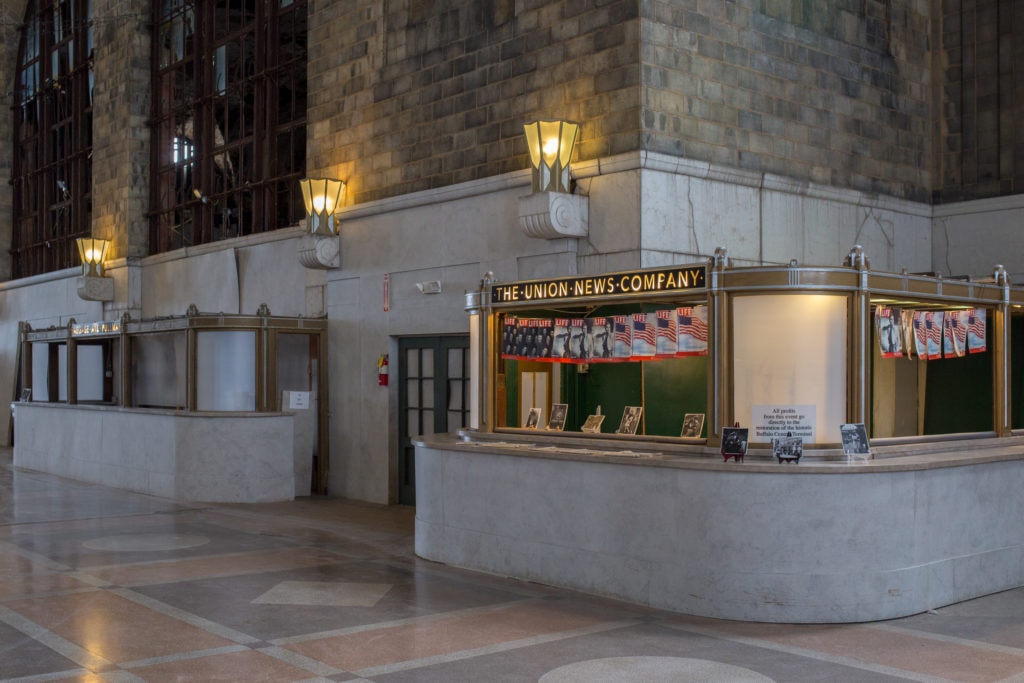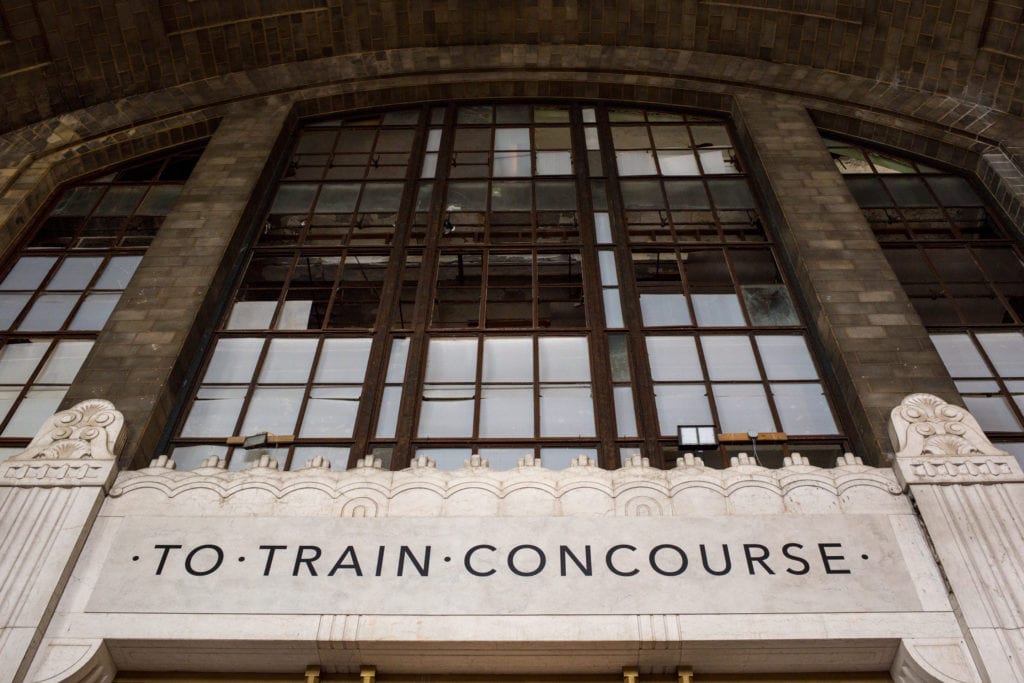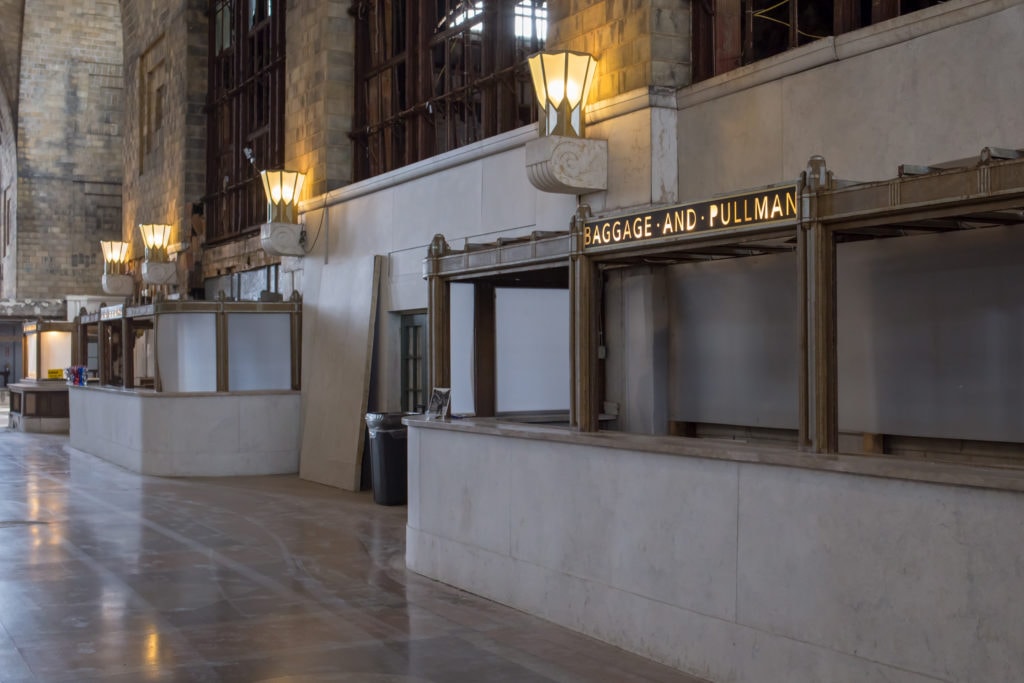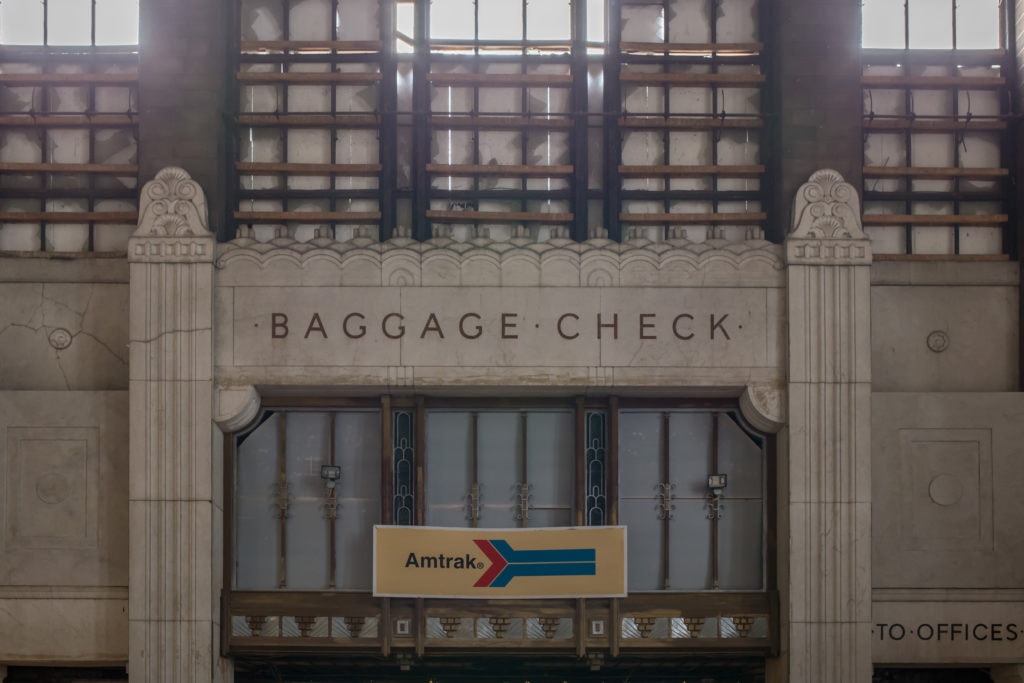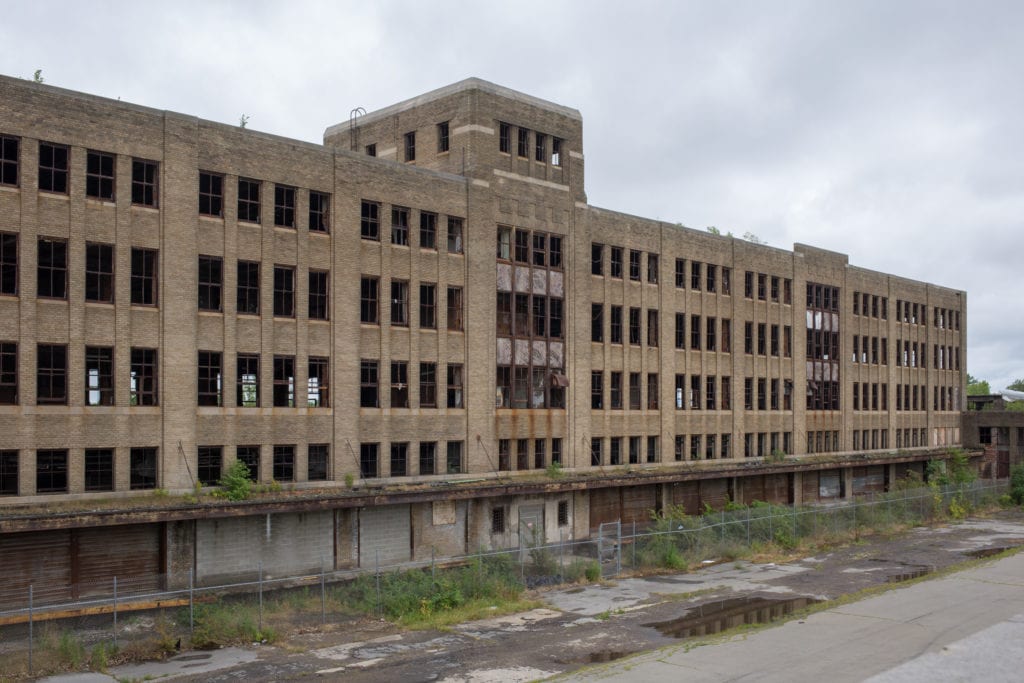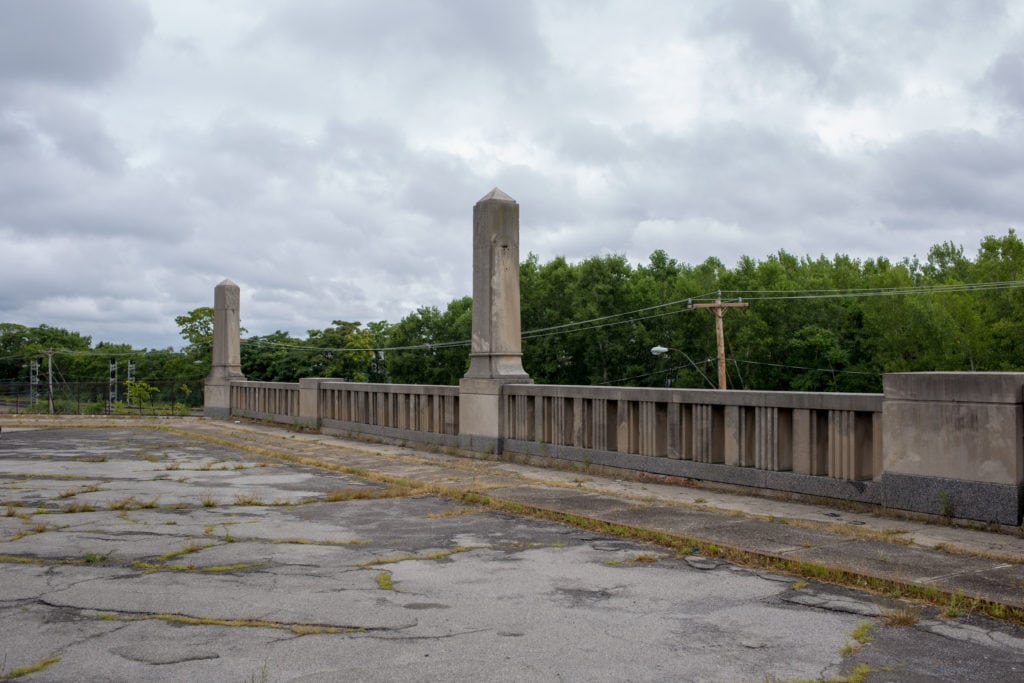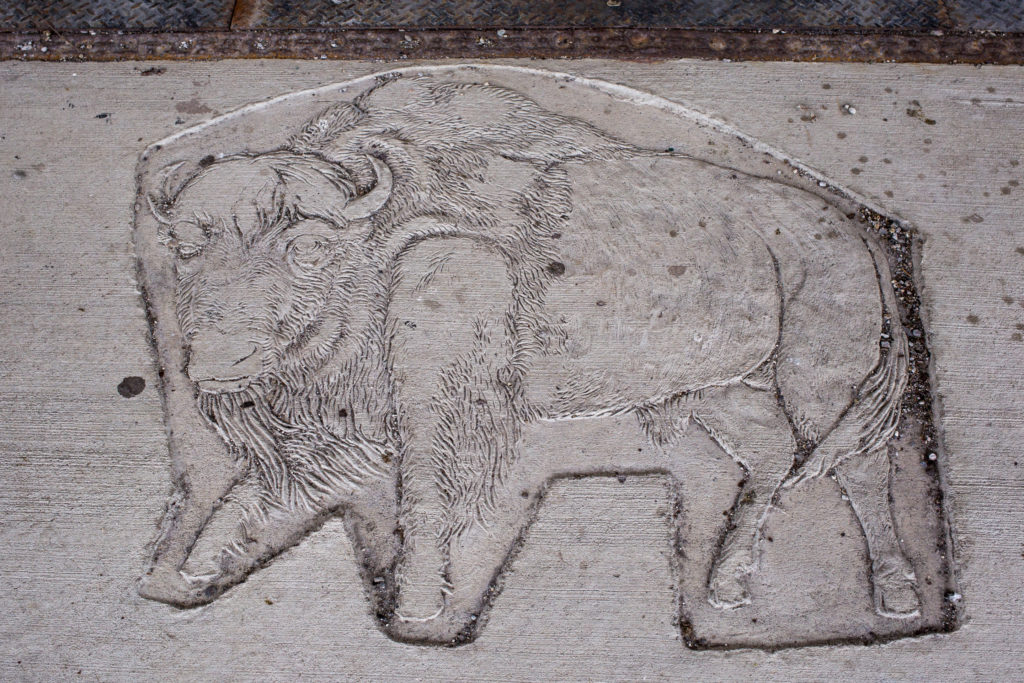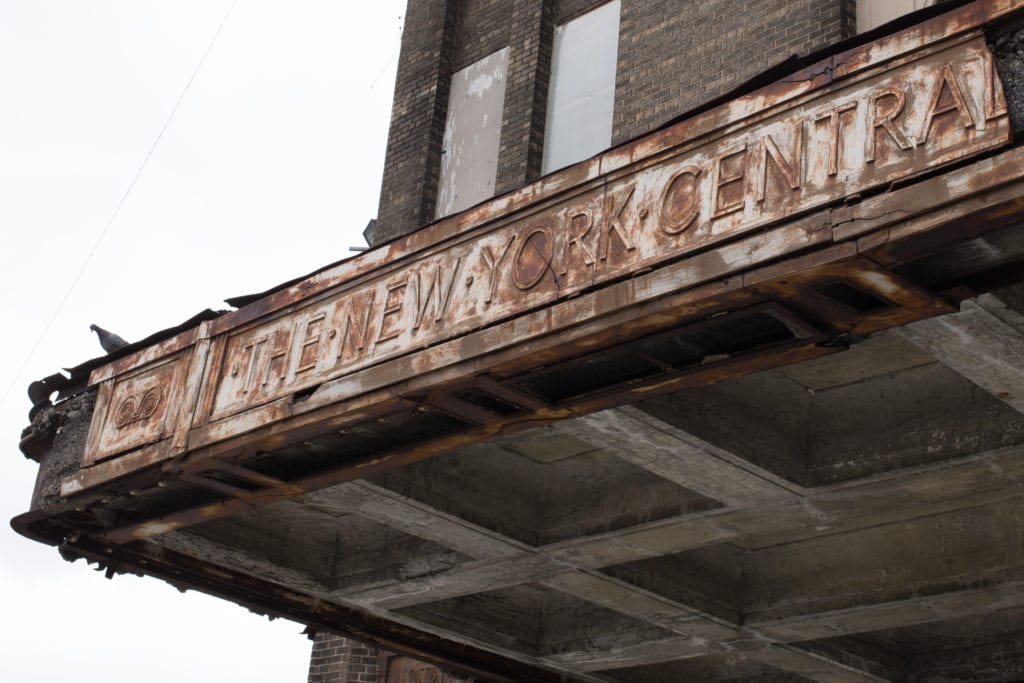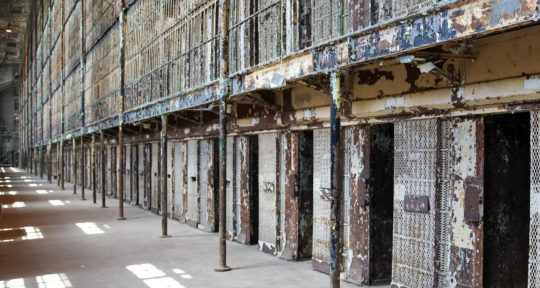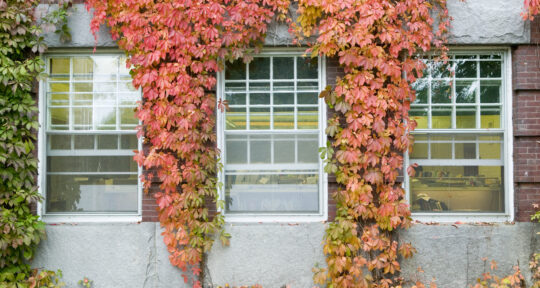At 2 p.m. on June 22, 1929, a crowd of 2,200 people watched as the eastbound Empire State Express became the first train to depart from Buffalo’s grand new train station. This grand opening gala was the largest event in the city at the time; the 2 o’clock train was ceremonial, but regularly scheduled service began the next day—and continued until the very last train left the Buffalo Central Terminal in the early morning hours of October 28, 1979.
As a result of the negligence of several previous owners and due to its popularity with urban explorers, the 17-story, art deco-style station was in bad shape when it was acquired by the Central Terminal Restoration Corporation (CTRC) in 1997. The CTRC has been slowly repairing, stabilizing, and restoring the historic structure, and in 2003 the building was re-opened for public tours.
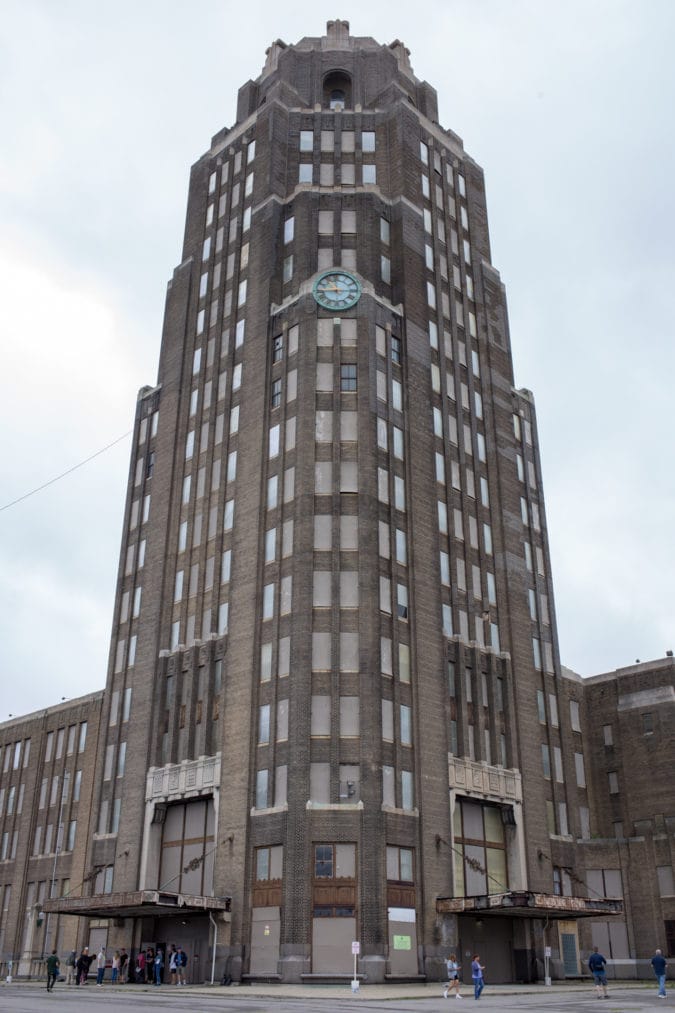
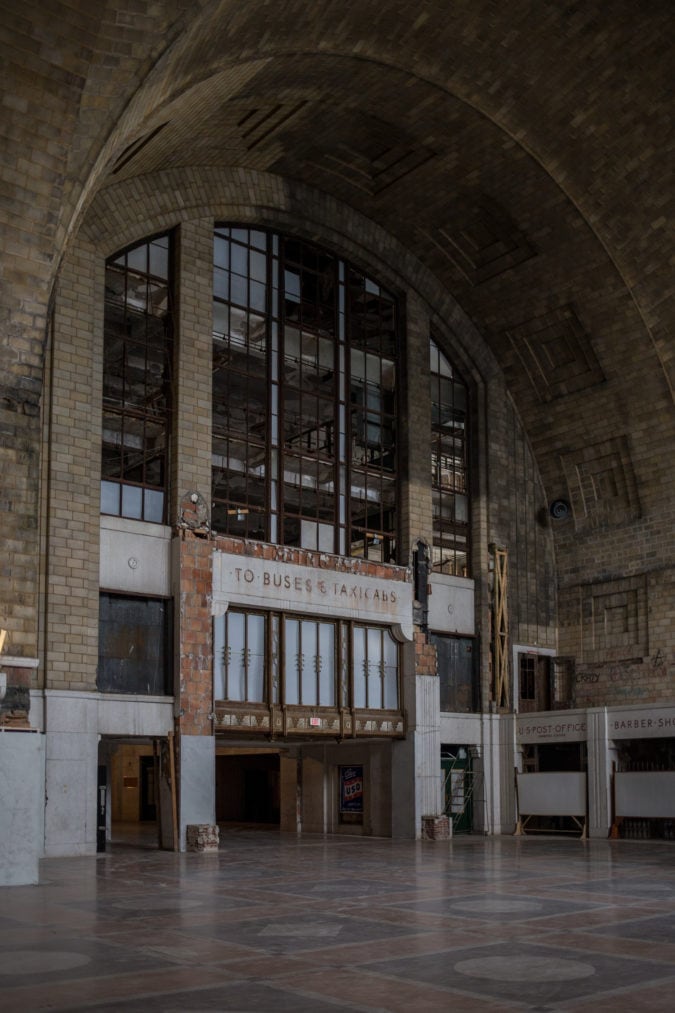
To celebrate the 90th anniversary of the terminal’s opening day, the CTRC is hosting a Gatsby-themed dinner dance on June 22 featuring The Buffalo Dolls, the Ladies First Jazz Big Band, and the Ballroom and Beyond Dancers. June’s historical tour will take place the next day, and on June 29, some of the best classic cars from across Western New York—and their owners—will gather for the Central Terminal car show.
Too expensive to demolish
I took a public tour of the Central Terminal last year and signs of the CTRC’s care and restoration efforts were everywhere. The main hall is expansive, with vaulted ceilings, decorative railings, and patterned floors. Even decades of neglect have not dulled the terminal’s ability to dazzle, and it feels as if at any moment the concourse will once again be flooded with travelers.
In addition to several ticket counters, the main hall also contained a post office, a restaurant and coffee shop, a barber shop, a Western Union telegraph office, and a soda fountain. Over the years, previous owners removed and sold almost everything of value from the terminal complex. The building wasn’t secured, vandalism was rampant, and the absence of key architectural pieces increased exposure to the elements and accelerated the building’s decay.
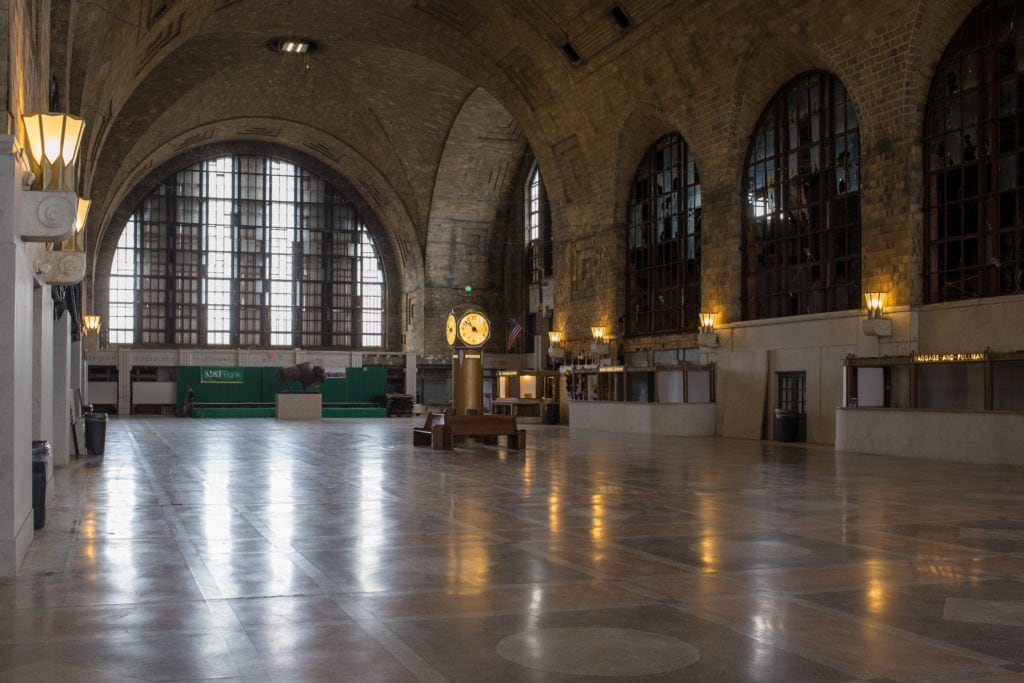
The CTRC has been scouring antique stores and auction sites, hoping to find—and buy back—original fixtures from the terminal. In 2005, the concourse clock was found in an antique shop, purchased (thanks to a public fundraising effort), and returned to its original home in the center of the concourse in 2009. In 2012, a Toronto antiques dealer donated an original light fixture back to the terminal. Early this year, when five light fixtures from the terminal were scheduled to be auctioned off in New Jersey, the CTRC set up a GoFundMe fundraiser to raise the $21,000 needed to purchase and transport the fixtures.
“Light fixtures, railings, clocks, and different artifacts wound up around the world,” terminal tour guide Christopher Gurnett told the Buffalo News. “Some light fixtures made it to Cafe Deco in Hong Kong. We have a mailbox in Florida.”
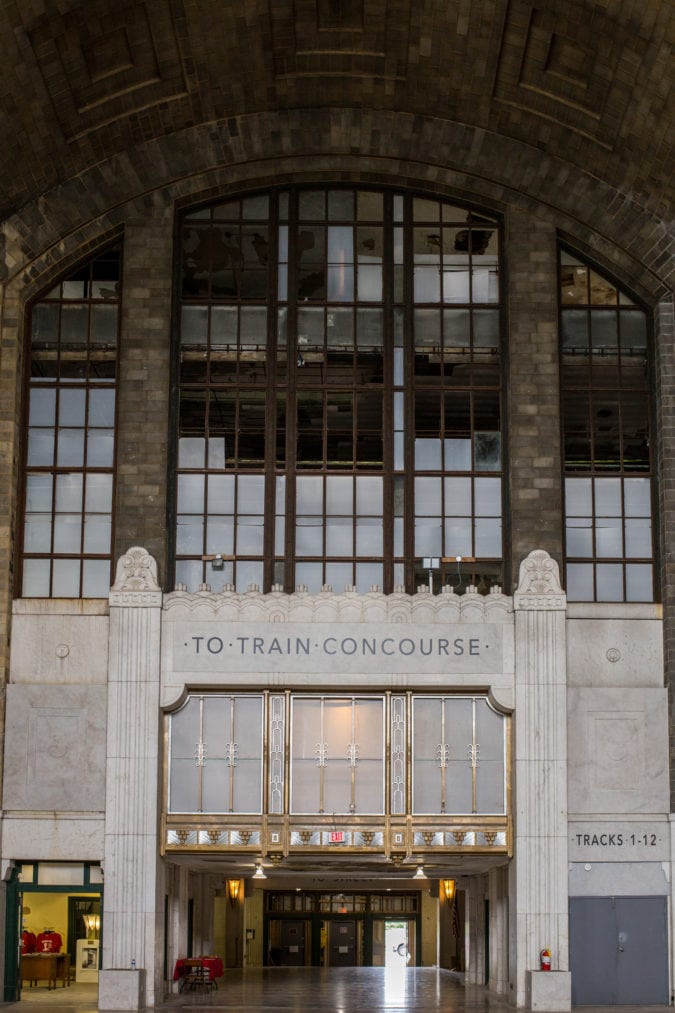
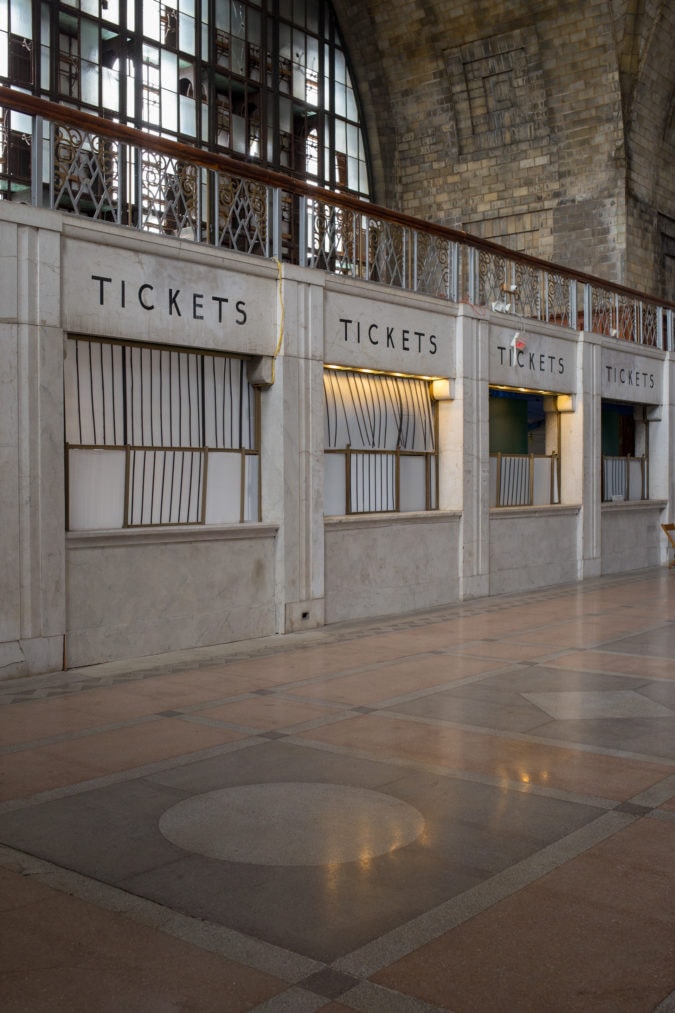
In the 1980s, the Buffalo Central Terminal was popular with both vandals and explorers. At the beginning of the tour, our guide asked people to raise their hands if they’d previously visited the terminal. When he followed up with, “How many of you came here when you weren’t supposed to?” most of the hands remained raised.
In 1984, the terminal was placed on the State and National Registers of Historical Places, which, combined with the high cost of demolition—estimates exceeded $10 million—helped save the main structure from the wrecking ball.
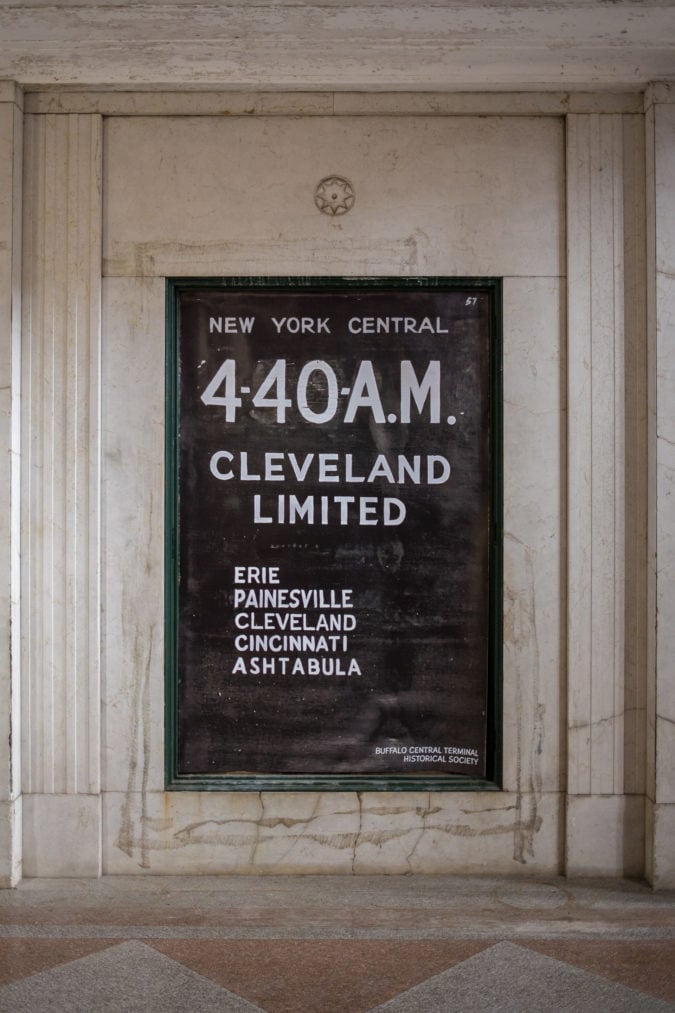
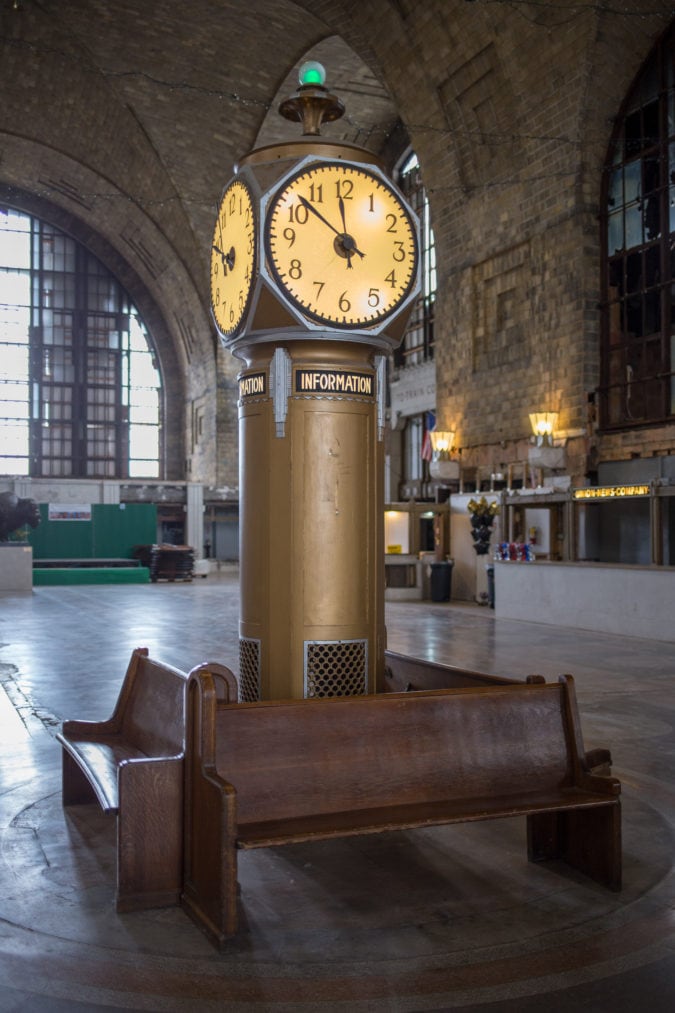
Repair and restoration of the roof was completed in 2015 and signs inside of the concourse are slowly being repainted. In 2016, the Goo Goo Dolls filmed a music video at the terminal and the production of the movie Marshall contributed $90,000 in cosmetic improvements to the interior.
New York Central Railroad to Amtrak
Although the idea for the Buffalo Central Terminal had been in the works since the 1880s, construction officially began in 1925. The station was designed by Alfred T. Fellheimer, the architect responsible for New York’s other famous train station: Grand Central Terminal. The complex comprises several interconnected structures, including concourses, an office tower, baggage building, and mail building. A Pullman Company service building, an ice house, a coach shop, and a power station were torn down over the years in an attempt to lower taxes on the property.
The terminal hosted trains from the New York Central Railroad (its owner) as well as from the Canadian National Railway, Pennsylvania Railroad, and the Toronto, Hamilton and Buffalo Railway. As soon as the terminal opened, it was servicing 200 trains daily—although almost immediately the Great Depression and the increasing popularity of the automobile led to a decline in train traffic.
A restored newsstand. | Photo: Alexandra Charitan A restored sign. | Photo: Alexandra Charitan Photo: Alexandra Charitan Amtrak was the last company to run trains through the terminal. | Photo: Alexandra Charitan
In 1956, the terminal was put up for sale for $1 million, but no one was interested. In 1968, New York Central Railroad and Pennsylvania Railroad merged—forming the Penn Central System—and just two years later the new company declared bankruptcy. With the creation of Amtrak in 1971, service was restored to Niagara Falls and Toronto via the Maple Leaf, but the Buffalo Central Terminal was simply too big and expensive to maintain. In 1979, Amtrak opened the much smaller Buffalo-Depew station, and by October of that year the Central Terminal ceased operations.
The terminal was sold to Anthony T. Fedele for $75,000, but when he defaulted on his taxes in 1986, the property was put up for auction and sold to Thomas Telesco—the only bidder—for $100,000. Telesco had plans for a banquet hall or to return train service to the building, but those fell through and the building sat vacant until the CTRC assumed ownership.
Looking to the past for the future
Today, in addition to its restoration efforts, the CTRC hosts 30 events a year in the historic space, including concerts, historical and ghost tours, bike rallies, an annual Train Show, and an Oktoberfest party. The terminal does not currently have the resources to host weddings or wedding photo sessions.
“We’re incredibly proud of our volunteers and our board for doing an amazing job managing our popular events and bringing so many people inside to experience this magical building,” Jim Hycner, chair of the Central Terminal Restoration Corporation told WKBW Buffalo.
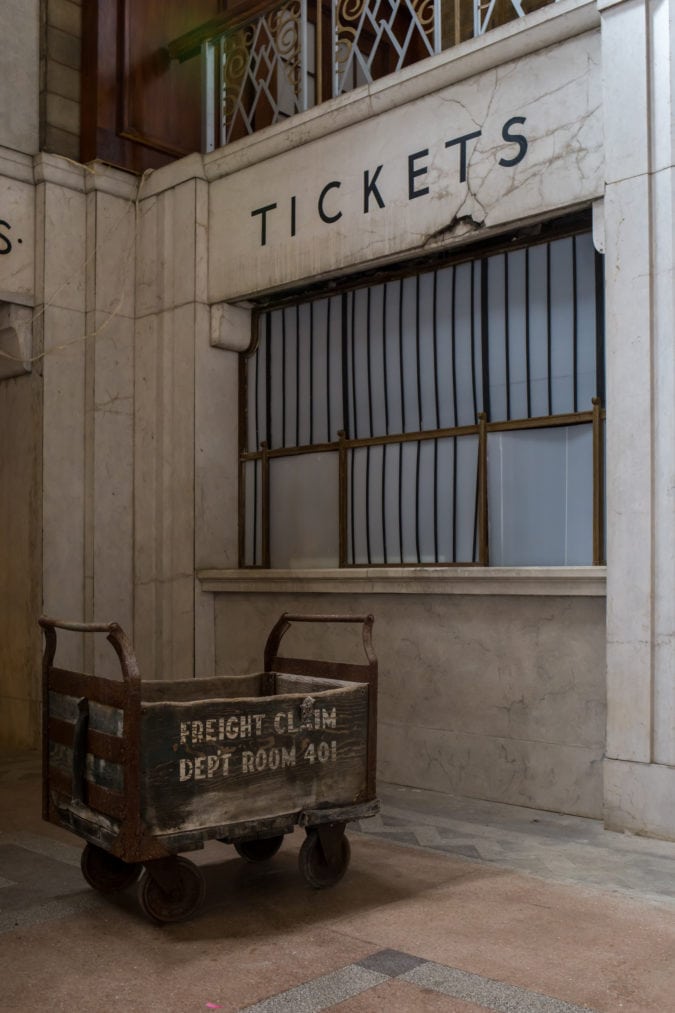
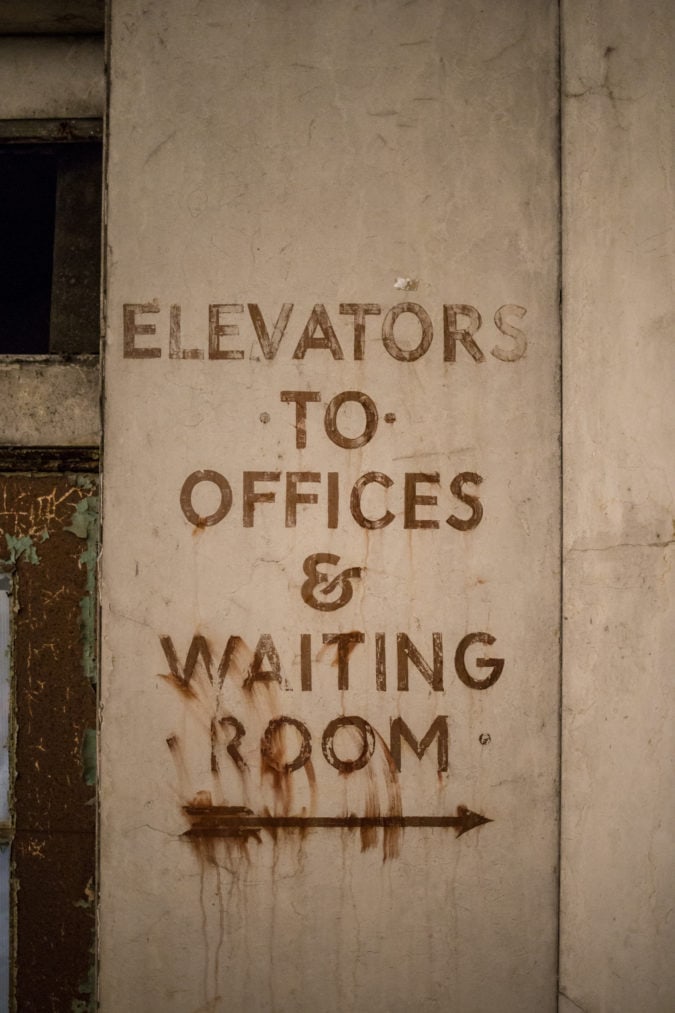
Although the terminal, located in the Broadway/Fillmore neighborhood, is a few miles from downtown and the waterfront, a developer has floated plans to build townhouses on the land surrounding the terminal, while converting the terminal complex into offices and retail space.
But the Central Terminal may also get another chance to do what it was designed to do: serve as a train station. The downtown Exchange Street station was closed recently due to a partial ceiling collapse, and New York state has earmarked $25 million for a new Buffalo train station. U.S. Representative Brian Higgins is part of a growing group of people looking into the past for Buffalo’s future and considering a full renovation of the Central Terminal. While CTRC owns the concourse building, Amtrak still owns the tracks and platforms outside of the terminal.
Baggage building. | Photo: Alexandra Charitan Photo: Alexandra Charitan Sidewalk detail. | Photo: Alexandra Charitan Photo: Alexandra Charitan
Buffalo currently has two train stations—Exchange Street and Depew—both smaller and considerably less grand than the Central Terminal. Ironically, I had to leave the tour a bit early to catch a train, and the contrast between the old and new stations is especially jarring. With its drop ceiling and beige-brick interior, the Depew station feels more like a DMV or a dentist’s office than a gateway to the wonders that traveling across American by train can reveal.
Whether it was experienced at the beginning or the end of a trip, the Central Terminal’s grandeur is a love letter to travel itself—encouraging travelers to slow down, look around, and realize that there’s so much more to a journey than the destination.
If you go
CTRC offers historical tours of the Buffalo Central Terminal every month. Tickets can be purchased in advance and usually sell out quickly.
